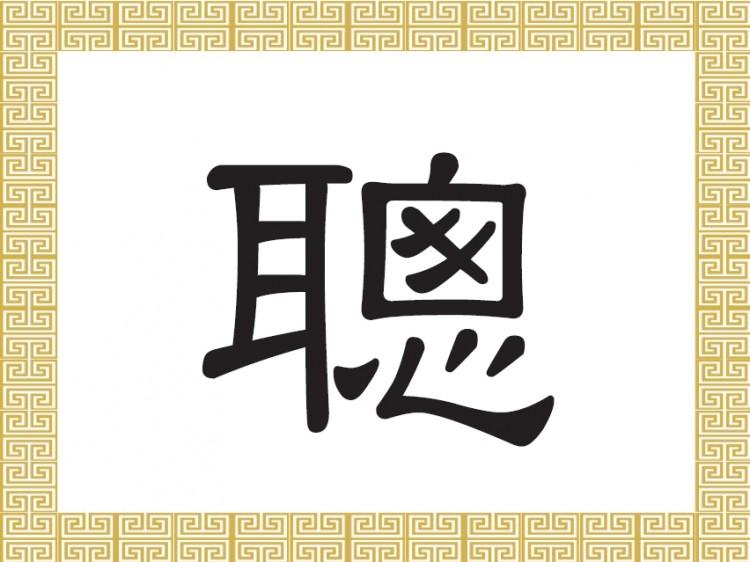The Chinese character 聰 (cōng) stands for intelligence or cleverness. It also refers to the faculty of hearing.
It comprises three parts: 耳 (ěr), the character for ear, on the left; a pictograph symbolizing two eyes on the top right; and 心 (xīn), the character for heart, on the bottom right.
聰 (cōng) conveys the rich meaning of what constitutes intelligence. One must first listen, then look attentively with one’s eyes, and then use the mind and heart to think carefully in order to clearly understand the truth of a matter.
Some common terms using 聰 include 聰明 (cōng míng) and 聰慧 (cōng huì), meaning smart, clever, bright, or intelligent, and 失聰 (shī cōng), referring to deafness.
耳聰目明 (ěr cōng mù míng) states that one must both listen and see well to thoroughly grasp a situation.
冰雪聰明 (bīng xuě cōng míng) describes extreme intelligence, as sharp and penetrating as the cold of ice and snow.
聰明聽話 (cōng míng ting huà) is an expression of praise for a clever and obedient child.
聰明正直 (cōng míng zhèng zhí) refers to someone who is both wise and upright.
The Epoch Times publishes in 35 countries and in 21 languages. Subscribe to our e-newsletter.




